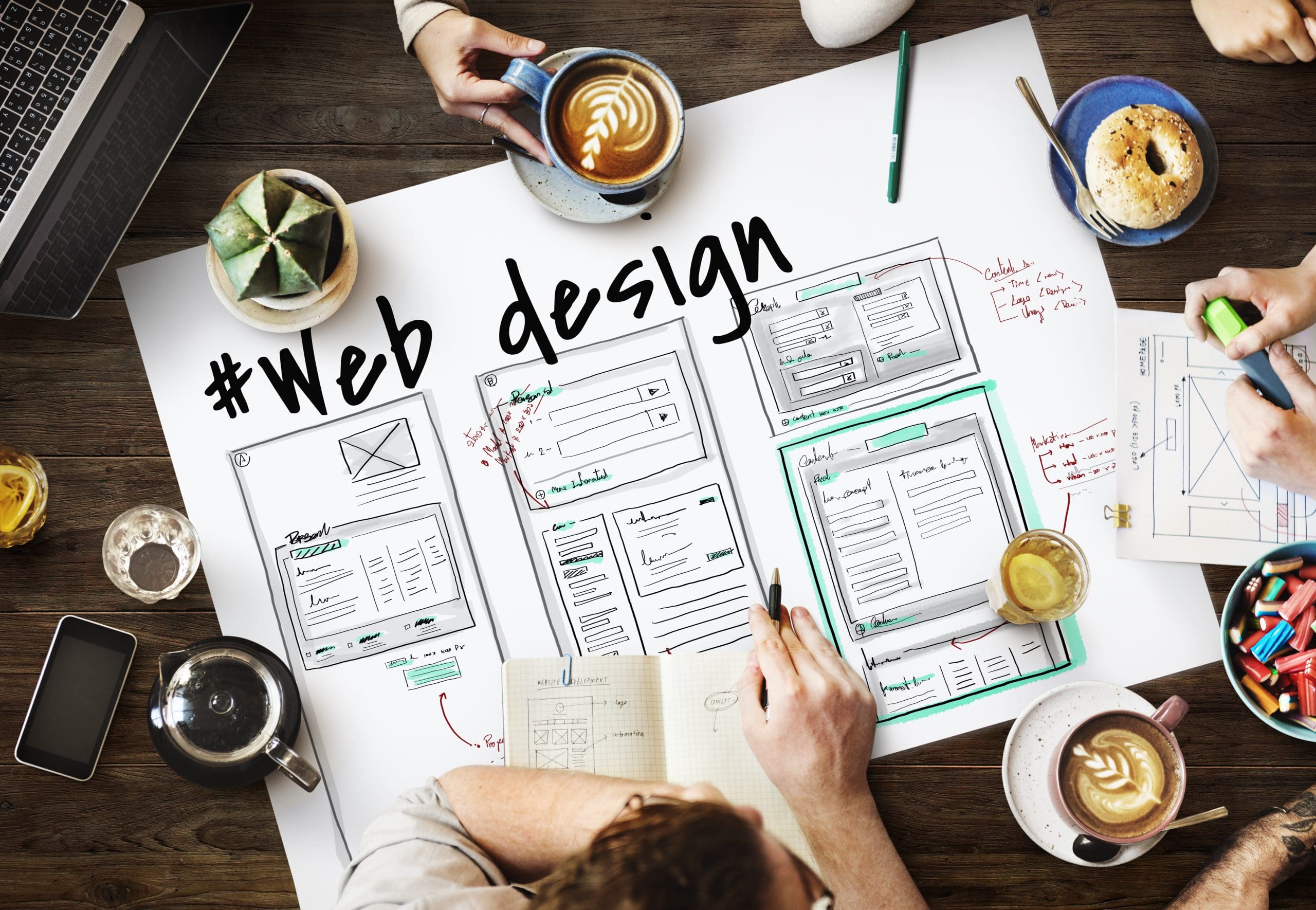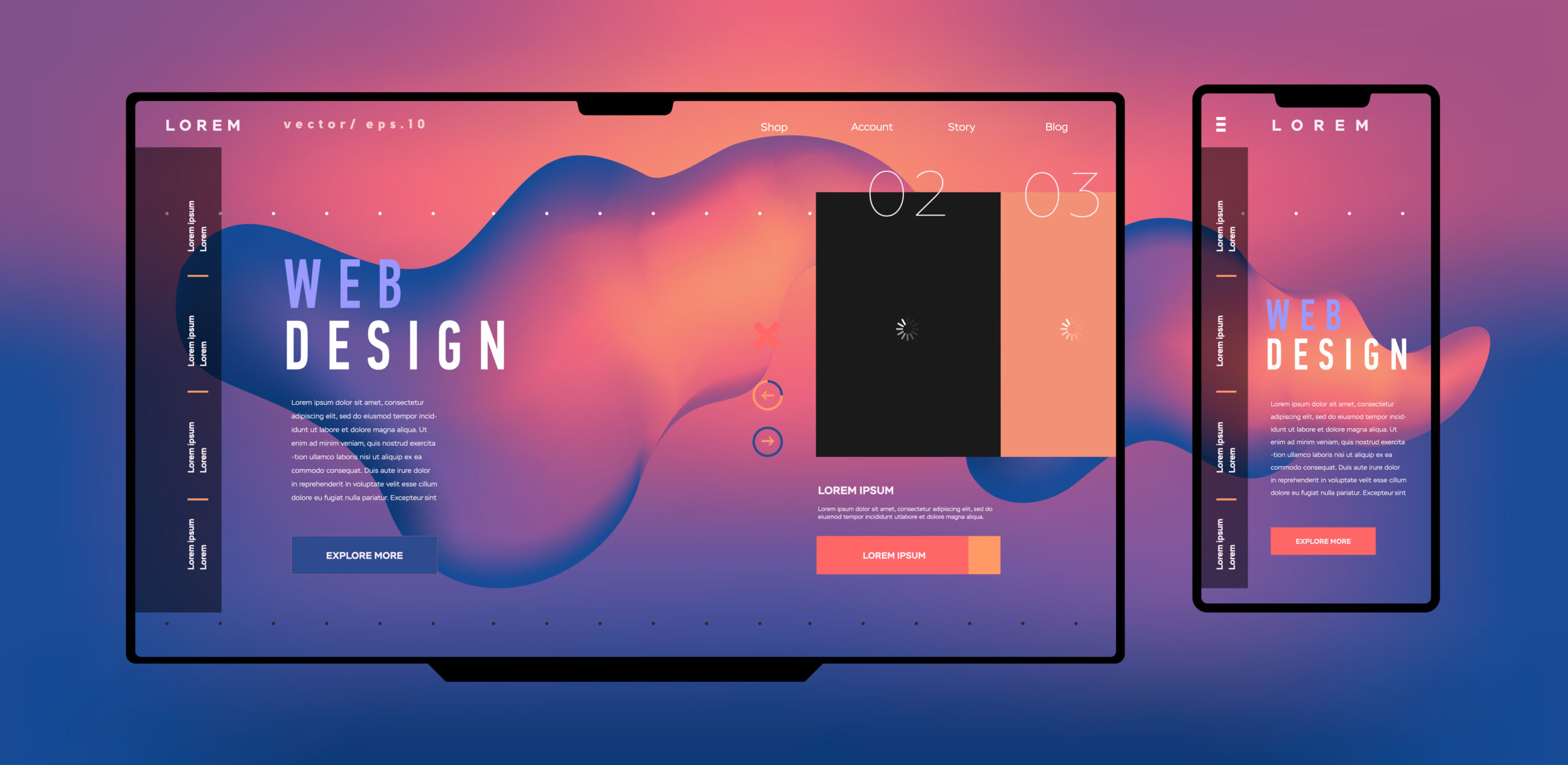How Innovative Web Design Can Change Your Brand Name Identity
Cutting-edge web design plays a vital function in forming a brand's identification. It functions as the digital store, affecting impressions and user interaction. Thoughtful design choices can develop unforgettable experiences and foster loyalty. Nonetheless, the effect goes beyond visual appeals. Recognizing the underlying principles of reliable web design can expose its real potential. What methods might be used to guarantee that a brand not just stands apart but additionally resonates with its target market?
The Importance of First Impressions in Web Design
Just how vital is an impression in the domain of web design? It offers as the initial entrance to user involvement, identifying whether site visitors will certainly check out more or abandon the website. A website's visual and functionality can considerably affect perceptions of a brand's reputation and expertise. In an age where digital communications are instantaneous, individuals form point of views within seconds, making aesthetic charm and user-friendly navigating essential.
An effective initial impression can promote depend on and urge expedition, while a poorly developed interface may evoke frustration and apprehension. Components such as color schemes, typography, and layout all add to this first assumption. In addition, uniformity in design across all pages strengthens brand identity. Therefore, the significance of very first perceptions in web design can not be overstated; they not just dictate user retention however likewise influence overall user experience and contentment, ultimately shaping a brand's reputation in a competitive online landscape.
Key Elements of Reliable Web Design
A website's efficiency depends upon a number of crucial elements that operate in harmony to create a favorable user experience. Intuitive navigating is important, permitting users to situate information easily. Concise and clear web content improves understanding and involvement, while tactical use whitespace prevents frustrating the audience.
Receptive design is an additional vital aspect, seeing to it that the website works well on various tools and screen sizes. Rapid loading times are needed; slow-moving sites can cause high bounce prices.
Visual elements, including high-grade images and an attractive format, contribute to a visually pleasing experience that reverberates with users. Finally, access ought to not be ignored, as it assures that all users, despite capability, can connect with the website.
Exactly How Color Psychology Influences Brand Name Perception
Shade psychology plays a pivotal role fit brand perception, affecting consumer feelings and actions in extensive means. Various colors evoke specific feelings; as an example, blue commonly communicates trust fund and expertise, while red can evoke enjoyment or urgency. Brands purposefully take advantage of these associations to improve their identity and get in touch with their target market.
As an example, a technology business might make use of a smooth blue palette to job dependability, while a food brand name might go with vivid reds and yellows to promote appetite and energy - Website Design Agency. The uniformity of color across different systems strengthens brand name recognition and helpful resources cultivates loyalty

Enhancing User Experience With Ingenious Functions
Various innovative attributes can substantially improve user experience in web design, creating a more interesting and user-friendly interaction for site visitors. Interactive aspects such as dynamic web content, computer animations, and responsive layout assurance that users continue to be mesmerized and involved. Integrating functions like chatbots can offer real-time assistance, boosting interaction and attending to user queries quickly.
Additionally, personalized web content based on user actions cultivates a tailored experience, urging long term involvement. Ease of access features, consisting of voice navigating and screen viewers, assure inclusivity for all customers, further boosting total contentment.
Carrying out intuitive navigating, such as sticky food selections and breadcrumb routes, enables customers to discover details easily, decreasing frustration. Integrating micro-interactions, like refined computer animations throughout button clicks, can offer favorable responses, reinforcing user actions. Eventually, these ingenious attributes function jointly to develop a seamless and satisfying user experience, considerably boosting the total perception of a brand.
Case Researches: Brands That Transformed Their Identification With Web Design
Internet layout plays a crucial function fit a brand's identification, as shown by different firms that have actually successfully redefined their image through innovative online experiences. A noteworthy example is Airbnb, which revamped its website to focus on storytelling and user-generated web content. This strategy not only enhanced user interaction however likewise reinforced its community-centric brand name identity.
The rebranding of Dropbox via a minimal style stressed simplicity and functionality, straightening flawlessly with its objective to make file sharing effortless. The brand-new visual identity cultivated a contemporary and credible photo.
An additional case is Mailchimp, which shifted from a straightforward email advertising device to a full-fledged advertising and marketing system. Its lively design and spirited imagery reflect a approachable and imaginative brand individuality, attracting a wider audience.
These transformations show look at this web-site how critical web design can significantly affect understanding, ultimately driving brand commitment and market growth. - Web Design services
Often Asked Inquiries
Exactly How Much Does Cutting-edge Web Design Usually Price?
Ingenious web design commonly costs in between $2,500 to $15,000, relying on complexity, functions, and developer experience. Customized remedies may exceed this array, reflecting the investment in high quality and capability that enhances user experience.

What Are the most recent Web Design Trends to View?
The most up to date web design fads consist of minimalism, bold typography, dark setting, interactive aspects, and immersive narration. These components enhance user experience, ensuring websites remain engaging and aesthetically appealing in a significantly electronic landscape.
The length of time Does an Internet Design Project Usually Take?
A web layout task commonly takes in between 4 to twelve weeks, depending upon elements such as complexity, customer comments, and the style team's workload. Timelines may differ significantly based upon specific task requirements and objectives.
Can I Upgrade My Internet Site Without Shedding Search Engine Optimization Rankings?
Yes, a site can be revamped without losing SEO rankings. Cautious planning, keeping URL structures, optimizing on-page elements, and upgrading backlinks aid protect presence in online search engine throughout and after the redesign process.
What Operating systems Are Ideal for Carrying Out Ingenious Web Design?
Popular platforms for cutting-edge web design include WordPress, Wix, and Squarespace. Each deals special features, layouts, and personalization options, allowing individuals to develop aesthetically appealing and useful internet sites that align with their brand identity.
Innovative internet style plays a crucial function in shaping a brand name's identification. Various innovative functions can substantially boost user experience in internet design, producing a much more instinctive and engaging interaction for site visitors. web design company. Interactive components such as dynamic web content, animations, and responsive style warranty that customers remain mesmerized and entailed. Internet design plays an essential function in forming a brand name's identification, as evidenced by different business that have actually efficiently redefined their photo through innovative on the internet experiences. A web style project commonly takes in between 4 to twelve weeks, depending on factors such as complexity, client feedback, and the style team's workload